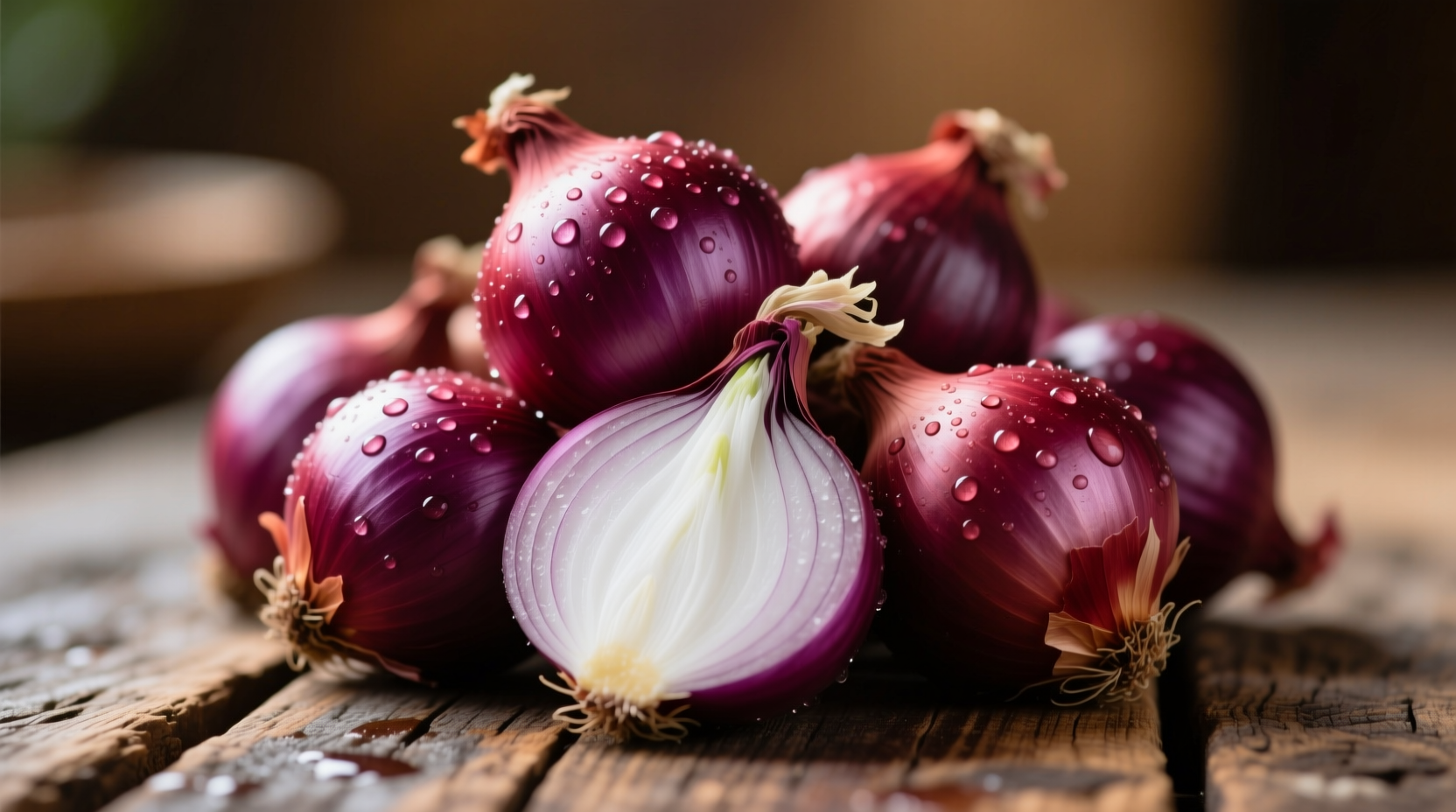Professional chefs consistently reach for red onions first when crafting visually appealing dishes that deliver balanced flavor without overwhelming heat. Unlike their yellow counterparts, red onions contain anthocyanins—the same powerful antioxidants found in blueberries—that give them their distinctive purple hue and additional health benefits. This comprehensive guide reveals exactly why red onions deserve a permanent spot in your kitchen and how to maximize their culinary potential.
What Exactly Are Red Onions?
Red onions (Allium cepa var. aggregatum) represent one of the most visually striking members of the onion family. Their deep purple-red skin and matching rings create dramatic presentations in raw applications. Originating in the Mediterranean region, these onions have become culinary staples worldwide due to their unique combination of visual appeal and balanced flavor profile.
Unlike yellow onions that develop intense sweetness when cooked, red onions maintain a distinctive crisp texture and vibrant color when used raw—qualities that make them indispensable in fresh preparations. Their flavor strikes the perfect middle ground: less pungent than white onions but with more complexity than sweet Vidalias, creating ideal versatility across culinary applications.
| Onion Variety | Flavor Profile (Raw) | Best Culinary Uses | Storage Life |
|---|---|---|---|
| Red Onions | Mild, slightly sweet with subtle heat | Salads, salsas, sandwiches, pickling | 2-3 weeks at room temperature |
| Yellow Onions | Strong, pungent when raw | Caramelizing, soups, stews, roasting | 2-3 months when stored properly |
| White Onions | Sharp, clean bite | Mexican cuisine, guacamole, ceviche | 2-3 weeks refrigerated |
| Shallots | Delicate, subtle garlic notes | Vinaigrettes, sauces, delicate dishes | 1-2 months refrigerated |
Nutritional Advantages of Red Onions
Red onions outperform other varieties in nutritional content, particularly regarding antioxidant compounds. According to USDA FoodData Central, red onions contain approximately 10 times more flavonoids than yellow onions. The distinctive purple color comes from anthocyanins—potent antioxidants associated with reduced inflammation and improved heart health.
A 2021 study published in the Journal of Agricultural and Food Chemistry confirmed that red onions demonstrate superior antioxidant activity compared to other common onion varieties. Researchers found that the anthocyanin content in red onions helps protect against oxidative stress, potentially reducing risk factors for chronic diseases. Unlike cooking methods that can diminish nutrients in other vegetables, red onions maintain their antioxidant properties whether consumed raw or lightly cooked.

Culinary Applications That Shine
Professional chefs leverage red onions' unique properties in specific applications where their visual appeal and balanced flavor make the greatest impact:
Raw Preparations
When sliced paper-thin and soaked in ice water for 15 minutes, red onions lose their sharp bite while maintaining crisp texture—perfect for topping fish tacos, enhancing Greek salads, or adding visual drama to burgers. The mild acidity of lime juice actually intensifies their natural purple color, making them ideal for salsas and ceviches.
Cooking Techniques
While many cooks avoid cooking red onions due to potential color loss, proper technique preserves both appearance and flavor. Adding a splash of vinegar during cooking maintains the vibrant hue, while quick sautéing over medium heat develops sweetness without turning them brown. Try them caramelized with balsamic vinegar for an elegant side dish that pairs beautifully with roasted meats.
Selecting and Storing for Maximum Freshness
When choosing red onions at the market, look for firm bulbs with dry, unbroken skin and no soft spots. The heaviest onions for their size typically contain the highest moisture content and best flavor. Avoid any with green sprouts emerging from the top, as these indicate age and diminished quality.
Proper storage extends their shelf life significantly. Keep uncut red onions in a cool, dark place with good air circulation—never in plastic bags which trap moisture and accelerate spoilage. Once cut, store in an airtight container in the refrigerator for up to 7 days. For longer preservation, slice and freeze them on a baking sheet before transferring to freezer bags—they'll maintain texture for up to 6 months.
Common Red Onion Mistakes to Avoid
Even experienced cooks sometimes make these critical errors with red onions:
- Using them interchangeably with yellow onions in cooked dishes—their higher sugar content causes them to burn more quickly
- Not soaking them before raw applications—a 15-minute soak in cold water removes excess sulfur compounds that cause harshness
- Storing them near potatoes—potatoes emit gases that accelerate onion spoilage
- Expecting consistent color in all preparations—the anthocyanins react to pH, turning blue in alkaline conditions and bright pink in acidic environments
Understanding these nuances transforms red onions from simple ingredients into powerful culinary tools that elevate everyday dishes with professional results.
Why Chefs Reach for Red Onions First
Professional kitchens consistently stock red onions for their versatility across global cuisines. In Mexican cooking, they're essential for pico de gallo and pickled red onions that top street tacos. Mediterranean chefs rely on them for Greek salads and tzatziki. Even in Japanese cuisine, thinly sliced red onions provide beautiful contrast in chirashi bowls.
The secret lies in their balanced flavor profile: less intense than white onions when raw but with more complexity than sweet onions. This makes them the perfect "Goldilocks" onion for applications where you want onion flavor without overwhelming heat. When properly prepared, they add both visual drama and nuanced flavor that elevates simple dishes to restaurant quality.











 浙公网安备
33010002000092号
浙公网安备
33010002000092号 浙B2-20120091-4
浙B2-20120091-4